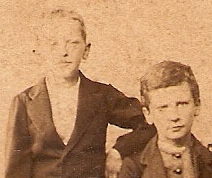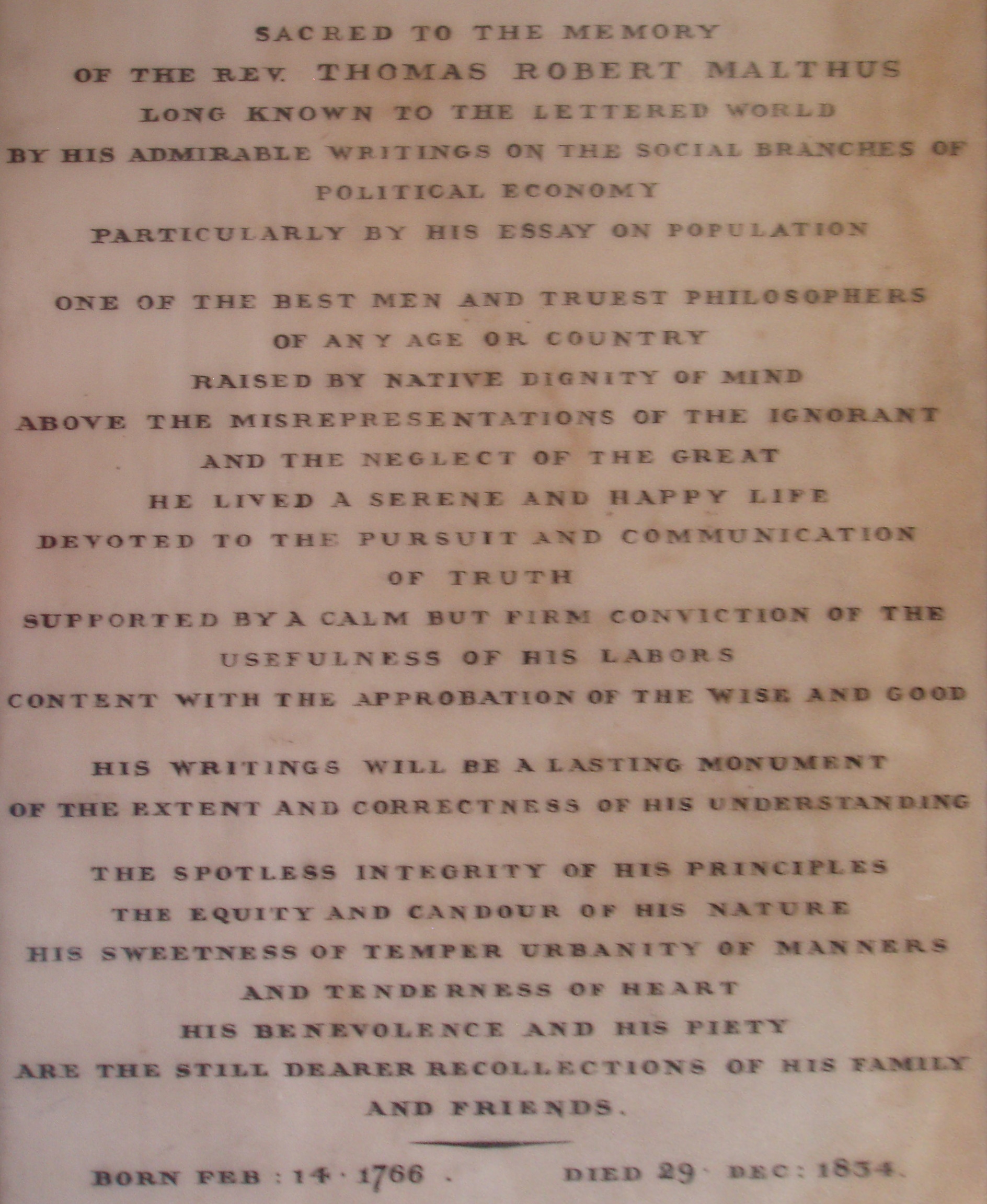|
Mathematical Biology
Mathematical and theoretical biology, or biomathematics, is a branch of biology which employs theoretical analysis, mathematical models and abstractions of living organisms to investigate the principles that govern the structure, development and behavior of the systems, as opposed to experimental biology which deals with the conduction of experiments to test scientific theories. The field is sometimes called mathematical biology or biomathematics to stress the mathematical side, or theoretical biology to stress the biological side. Theoretical biology focuses more on the development of theoretical principles for biology while mathematical biology focuses on the use of mathematical tools to study biological systems, even though the two terms interchange; overlapping as Artificial Immune Systems of Amorphous Computation. Mathematical biology aims at the mathematical representation and modeling of biological processes, using techniques and tools of applied mathematics. It ca ... [...More Info...] [...Related Items...] OR: [Wikipedia] [Google] [Baidu] |
Pierre François Verhulst
Pierre François Verhulst (28 October 1804, in Brussels – 15 February 1849, in Brussels) was a Belgian mathematician and a doctor in number theory from the University of Ghent in 1825. He is best known for the logistic growth model. Logistic equation Verhulst developed the logistic function in a series of three papers between 1838 and 1847, based on research on modeling population growth that he conducted in the mid 1830s, under the guidance of Adolphe Quetelet; see for details. Verhulst published in the equation: : \frac = rN - \alpha N^2 where ''N''(''t'') represents number of individuals at time ''t'', ''r'' the intrinsic growth rate, and ''\alpha'' is the density-dependent crowding effect (also known as intraspecific competition). In this equation, the population equilibrium (sometimes referred to as the carrying capacity, ''K''), N^*, is : N^* = \frac . In he named the solution the logistic curve. Later, Raymond Pearl and Lowell Reed popularized the equatio ... [...More Info...] [...Related Items...] OR: [Wikipedia] [Google] [Baidu] |
Hans Leo Przibram
Hans Leo Przibram ([]; 7 July 1874 – 20 May 1944) was an Austrian people, Austrian biologist who founded the biological laboratory in Vienna. Career Hans was as elder son of Gustav and Charlotte Przibram. His mother was the daughter of Friedrich Schey von Koromla. After attending the Academic Gymnasium in Vienna, he studied Zoology under Berthold Hatschek at the University of Vienna. In 1899 he graduated as medical doctor and Doctor of Philosophy. He received his habilitation at the University of Vienna in 1904 and from then on taught as a lecturer in zoology. In 1913, he became Professor of Experimental Zoology. In 1902, together with the botanists Leopold von Portheim and Wilhelm Figdor, Hans Przibram bought the "Vivarium" in the Vienna Prater and set up a private research institute for experimental biology, the "Biologische Versuchsanstalt" (BVA), which opened in the following year. In 1914, the BVA donated to the Academy of Sciences in Vienna, together with a foundati ... [...More Info...] [...Related Items...] OR: [Wikipedia] [Google] [Baidu] |
Ronald Fisher
Sir Ronald Aylmer Fisher (17 February 1890 – 29 July 1962) was a British polymath who was active as a mathematician, statistician, biologist, geneticist, and academic. For his work in statistics, he has been described as "a genius who almost single-handedly created the foundations for modern statistical science" and "the single most important figure in 20th century statistics". In genetics, Fisher was the one to most comprehensively combine the ideas of Gregor Mendel and Charles Darwin, as his work used mathematics to combine Mendelian genetics and natural selection; this contributed to the revival of Darwinism in the early 20th-century revision of the theory of evolution known as the Modern synthesis (20th century), modern synthesis. For his contributions to biology, Richard Dawkins declared Fisher to be the greatest of Darwin's successors. He is also considered one of the founding fathers of Neo-Darwinism. According to statistician Jeffrey T. Leek, Fisher is the most in ... [...More Info...] [...Related Items...] OR: [Wikipedia] [Google] [Baidu] |
D'Arcy Thompson
Sir D'Arcy Wentworth Thompson CB FRS FRSE (2 May 1860 – 21 June 1948) was a Scottish biologist, mathematician and classics scholar. He was a pioneer of mathematical and theoretical biology, travelled on expeditions to the Bering Strait and held the position of Professor of Natural History at University College, Dundee for 32 years, then at St Andrews for 31 years. He was elected a Fellow of the Royal Society, was knighted, and received the Darwin Medal and the Daniel Giraud Elliot Medal. Thompson is remembered as the author of the 1917 book '' On Growth and Form'', which led the way for the scientific explanation of morphogenesis, the process by which patterns and body structures are formed in plants and animals. Thompson's description of the mathematical beauty of nature, and the mathematical basis of the forms of animals and plants, stimulated thinkers as diverse as Julian Huxley, C. H. Waddington, Alan Turing, René Thom, Claude Lévi-Strauss, Eduardo Paolo ... [...More Info...] [...Related Items...] OR: [Wikipedia] [Google] [Baidu] |
On Growth And Form
''On Growth and Form'' is a book by the Scottish mathematical biology, mathematical biologist D'Arcy Wentworth Thompson (1860–1948). The book is long – 793 pages in the first edition of 1917, 1116 pages in the second edition of 1942. The book covers many topics including the effects of scale on the shape of animals and plants, large ones necessarily being relatively thick in shape; the effects of surface tension in shaping soap films and similar structures such as cells; the logarithmic spiral as seen in mollusc shells and ruminant horns; the arrangement of leaves and other plant parts (phyllotaxis); and Thompson's own method of transformations, showing the changes in shape of animal skulls and other structures on a Cartesian coordinate system, Cartesian grid. The work is widely admired by biologists, anthropologists and architects among others, but is often not read by people who cite it. Peter Medawar explains this as being because it clearly pioneered the use of Mathema ... [...More Info...] [...Related Items...] OR: [Wikipedia] [Google] [Baidu] |
Jakob Von Uexküll
Jakob may refer to: People * Jakob (given name), including a list of people with the name * Jakob (surname), including a list of people with the name Other * Jakob (band), a New Zealand band, and the title of their 1999 EP * Max Jakob Memorial Award, annual award to scholars in the field of heat transfer * Ohel Jakob synagogue (Munich) Fictional characters * Jakob, a character from the video game '' Fire Emblem Fates'' See also * Jacob (other) Jacob is an important figure in Abrahamic religions. Jacob may also refer to: People * Jacob (name), a male given name and surname, including a list of variants of the name ** Jacob (Book of Mormon prophet) ** Jacob (surname), including a list ... * St. Jacob (other) {{disambiguation ... [...More Info...] [...Related Items...] OR: [Wikipedia] [Google] [Baidu] |
Johannes Reinke
Johannes Reinke (February 3, 1849 – February 25, 1931) was a German botanist and philosopher, born in Ziethen, Lauenburg. He is remembered for his research of benthic marine algae. Academic background Reinke studied botany with his father from the age of eight. Reinke studied theology at Rostock, but his focus later changed to botany. In 1879 he became a professor of botany at the University of Göttingen, where he established the institute of plant physiology. From 1885 until 1921, he was a professor at the University of Kiel. Reinke was a co-founder of the ''Deutsche Botanische Gesellschaft''. Contributions Reinke had a keen interest in the systematics, developmental cycles, cytology and physiology of brown algae. From 1888 to 1892, he published a number of articles on marine algae from the North and Baltic Seas — in regards to the Baltic, he described several new genera of algae. He also published works on the algal families Tilopteridaceae (1889) and Sphacelariacea ... [...More Info...] [...Related Items...] OR: [Wikipedia] [Google] [Baidu] |
Carrying Capacity
The carrying capacity of an ecosystem is the maximum population size of a biological species that can be sustained by that specific environment, given the food, habitat, water, and other resources available. The carrying capacity is defined as the environment's maximal load, which in population ecology corresponds to the population equilibrium, when the number of deaths in a population equals the number of births (as well as immigration and emigration). Carrying capacity of the environment implies that the resources extraction is not above the rate of regeneration of the resources and the wastes generated are within the assimilating capacity of the environment. The effect of carrying capacity on population dynamics is modelled with a logistic function. Carrying capacity is applied to the maximum population an environment can support in ecology, agriculture and fisheries. The term carrying capacity had been applied to a few different processes in the past before finally being appl ... [...More Info...] [...Related Items...] OR: [Wikipedia] [Google] [Baidu] |
Charles Darwin
Charles Robert Darwin ( ; 12 February 1809 – 19 April 1882) was an English Natural history#Before 1900, naturalist, geologist, and biologist, widely known for his contributions to evolutionary biology. His proposition that all species of life have descended from a Common descent, common ancestor is now generally accepted and considered a fundamental scientific concept. In a joint presentation with Alfred Russel Wallace, he introduced his scientific theory that this Phylogenetics, branching pattern of evolution resulted from a process he called natural selection, in which the struggle for existence has a similar effect to the artificial selection involved in selective breeding.. Darwin has been described as one of the most influential figures in human history and was honoured by Burials and memorials in Westminster Abbey, burial in Westminster Abbey. Darwin's early interest in nature led him to neglect his medical education at the University of Edinburgh Medical Schoo ... [...More Info...] [...Related Items...] OR: [Wikipedia] [Google] [Baidu] |
Population Growth
Population growth is the increase in the number of people in a population or dispersed group. The World population, global population has grown from 1 billion in 1800 to 8.2 billion in 2025. Actual global human population growth amounts to around 70 million annually, or 0.85% per year. As of 2024, The United Nations projects that global population will peak in the mid-2080s at around 10.3 billion. The UN's estimates have decreased strongly in recent years due to sharp declines in global birth rates. Others have challenged many recent population projections as having underestimated population growth. The world human population has been growing since the end of the Black Death, around the year 1350. A mix of technological advancement that improved agricultural productivity and sanitation and medical advancement that reduced mortality increased population growth. In some geographies, this has slowed through the process called the demographic transition, where many nations with high ... [...More Info...] [...Related Items...] OR: [Wikipedia] [Google] [Baidu] |
Malthus
Thomas Robert Malthus (; 13/14 February 1766 – 29 December 1834) was an English economist, cleric, and scholar influential in the fields of political economy and demography. In his 1798 book ''An Essay on the Principle of Population'', Malthus observed that an increase in a nation's food production improved the well-being of the population, but the improvement was temporary because it led to population growth, which in turn restored the original per capita production level. In other words, humans had a propensity to use abundance for population growth rather than for maintaining a high standard of living, a view and stance that has become known as the "Malthusian trap" or the "Malthusian spectre". Populations had a tendency to grow until the lower class suffered hardship, want, and greater susceptibility to war, famine, and disease, a pessimistic view that is sometimes referred to as a Malthusian catastrophe. Malthus wrote in opposition to the popular view in 18th-century E ... [...More Info...] [...Related Items...] OR: [Wikipedia] [Google] [Baidu] |





